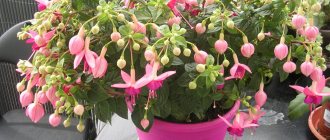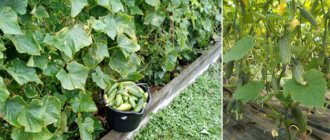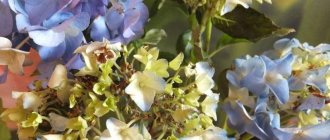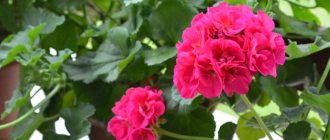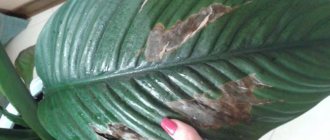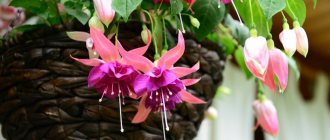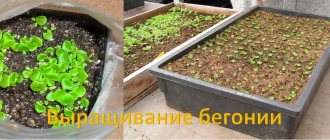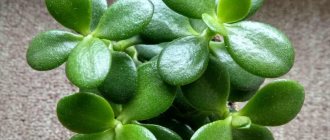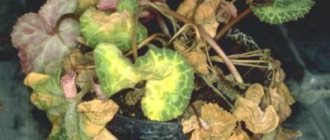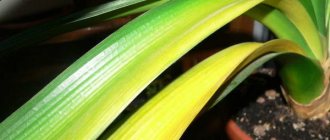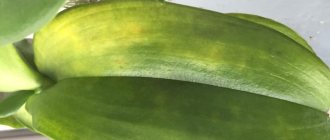The nature of yellowing of geranium leaves
Many gardeners are faced with the fact that geranium leaves turn yellow. There are many reasons why this can happen, and therefore you need to find a certain approach to the flower. Depending on the nature of the yellowing, it is determined what exactly caused the development of the disease.
Healthy indoor plant
Along the edges
The edge of the leaf most often begins to turn yellow in winter. This indicates improper care of the plant. In the summer, yellowing of the lower sheets indicates a lack of moisture, which occurs after moving a flower pot from the street to the room. This is how the flower reacts to climate change; after acclimatization, everything returns to normal.
Note! Yellowing of leaves on royal geraniums may occur due to a cramped flower pot. In this case, transplant the plant into a larger container.
Yellowing around the edges
Spots
The appearance of spots on geranium leaves indicates the presence of diseases. The leaf blade begins to lighten in places, the spots become brown, dry out and the leaves begin to fall off. If you do not start fighting the disease, the indoor flower may die. The symptom manifests itself when infected with pests that settle on the leaves and feed on their juices:
- nematodes;
- aphid;
- poutine mite;
- caterpillars;
- whiteflies.
It is important to know! Control pests using insecticides. They also practice preventive methods to prevent their occurrence.
Yellow spots on leaves
Yellowing is accompanied by wilting of the plant
If the flower suddenly begins to fade, then it may have problems with the roots (root rot). The disease can destroy the plant in a short time. It is recommended to cut the cutting and plant it. The instruments are first disinfected. Geranium leaves turn yellow and dry, what should I do?
Yellowing turns to blackening
Leaves are an indicator of the condition of the plant. They show how properly the geranium is cared for. If the conditions are not met, yellow spots may appear on the leaves, which subsequently turn black.
The test is carried out by touch. If the spots are dry, the air in the room is too dry. The solution is to increase the humidity. Wet spots indicate a mealybug infestation. In this case, the geranium drops its leaves. Scale insects are detected by sooty fungi that form a black coating on the plant. Treatment is carried out with insecticides.
Diseases and their treatment
Why do pelargonium leaves turn red? At home, the flower can grow in open ground in summer. It is often susceptible to fungal diseases, which causes the leaves to turn purple. It is necessary to urgently remove the infected areas and treat with Bordeaux mixture. This procedure must be done for a week.
In geraniums, white spots are a sign of a viral and fungal disease. The flower slows down in development and growth, the stem becomes bent, white stripes and yellow spots appear on the leaves. The plant is treated with fungicides.
Natural causes
Yellowness may appear for natural reasons; the flower sheds old leaves. It won't look very nice. The situation can be changed by pruning, which is best done in the spring. Simply cut off part of the stem and new green shoots will appear in its place.
The age of pelargonium is the cause of yellowness and dryness of leaves
Why do geranium leaves turn red - causes and treatment
Plants have a specific life cycle. Having reached a certain age, some parts of the flower die off, the lower leaves begin to turn yellow and fall off. This process is slow and continues until the leaf plate turns yellow.
Additional Information! The grower has no reason to worry, since the plant is not in danger. The yellowed leaves are cut off and you enjoy the appearance of a healthy plant.
The lower leaves often turn yellow
How to save a flower, how to water it or feed it at home?
All of the above manipulations will help save geraniums from yellowed leaves. Also, negative changes in the state of the plant can be prevented. To do this, you just need to follow the rules for caring for your indoor beauty:
- water regularly and abundantly;
- provide the flower with an influx of fresh air;
- periodically apply fertilizers, but do not overdo it;
- after moistening the soil, it needs to be loosened;
- maintain the air temperature at 22-25 degrees above zero.
Also, as preventive measures, you can use watering with the following mineral elements:
- potassium - it is necessary for the rapid growth of the flower;
- phosphorus - ensures abundant flowering of geraniums;
- nitrogen - thanks to this element, the green mass of the plant will begin to grow more luxuriantly, its color will become richer.
Now you know what causes the leaf blades of geraniums to turn yellow. Try to avoid all negative factors. After all, it is easier to prevent all problems than to solve them later.
If you find an error, please select a piece of text and press Ctrl+Enter.
Common causes of yellow leaves in geraniums related to care
Why do hydrangea leaves turn yellow and the edges dry out - causes and treatment
There are many reasons why geranium leaves turn yellow. The main ones are improper care. It is worth familiarizing yourself with the recommendations on how to properly care for geraniums so that their leaves do not turn yellow.
Too infrequent or frequent watering
The main reason for the poor health of pelargonium is non-compliance with the watering regime. It should be regular and moderate. Do not flood the plant with large amounts of water. Moistening is carried out as the soil dries.
No drainage layer
The leaves may turn yellow due to the lack of a drainage layer. Geranium does not like waterlogged soil; drainage should be taken care of at the stage of replanting the flower. In addition to yellow leaves, the flower may stop blooming.
cramped potty
The small volume of the flower pot does not allow the root system to obtain a sufficient amount of nutrients from the substrate. As a result, it stops growing and begins to wither.
Errors in care during the flower dormancy period
In winter, it is worth changing the care of the plant, since it is in a dormant period. The flower is not placed in a draft, near radiators or other heating devices. Reduce the number of waterings, as they lead to waterlogged soil.
Lack or excess of fertilizing
Nitrogen fertilizers are most often applied in the spring so that the flower gains green mass. With constant fertilization with this component, the plant will bloom late and the leaves will turn yellow. Feeding is useful only in reasonable quantities and at a certain period.
Dying plant
Incorrect placement of geraniums
One of the main criteria is the correct placement of the plant in the house. There are rules:
- there should be a lot of free space and a flow of fresh air around;
- the flower is light-loving, so good lighting is important;
- Drafts are not allowed.
Note! It is not recommended to leave geraniums on the windowsill in the winter, since cold air comes from the window, which can cause the leaves to become frostbitten. Under the window, as a rule, there is a radiator, the heat generation of which can overheat the roots of the flower.
High air humidity
Ampelous plants are kept in certain conditions. Comfortable air humidity for geraniums is 50-60%. Increasing and decreasing this indicator can lead to the flower beginning to wither.
Errors during transplantation
When transplanting, proceed with caution. It is not recommended to destroy the earthen ball, since this will damage the roots. First, the plant is watered abundantly, and only after a couple of hours do they begin replanting, carefully washing off the substrate from the roots.
The soil for replanting should be well-drained and moderately loose. Tolerates neutral acidity, slightly acidified environment is acceptable. Prepare the soil yourself from the following components:
- river sand;
- turf land;
- peat substrate;
- humus.
All ingredients are taken in equal proportions. Do not forget to regularly feed the plant so that the substrate is nutritious. Otherwise, the flower may begin to fade. Potassium is required for active growth, phosphorus for flowering, and nitrogen for the growth of green mass.
Transplantation is an important stage of care
Features of flower growth in an apartment
As already noted, indoor geranium does not cause much trouble to the owner. She is undemanding and requires minimal care. However, there are factors that should not be overlooked :
- there should be plenty of space in the pot;
- the soil should be chosen to be air-permeable for good air exchange;
- lots of sunshine;
- high-quality, timely watering.
It is important that the soil mixture meets the following standards: it has a good drainage layer, is moderately loose, rich in mineral components, and has a neutral pH.
The following components, taken in equal proportions, are considered the optimal composition for geranium:
- coarse fractional river sand;
- peat;
- humus;
- turf land.
Important! Alkaline soil is not suitable for geraniums.
Diseases that cause yellowness and dryness of foliage in geraniums
Spathiphyllum - leaves turn yellow: causes and treatment
Most often, pelargonium suffers from chlorosis, root rot and rust. The latter disease is considered the most dangerous to the health of the flower. It is the most common, and therefore it is worth monitoring the condition of geranium leaves regularly in order to notice the appearance of the disease in time.
Note! Rust appears as a large number of small light brown spots on the leaves. After some time, the stains dry out and begin to crack.
Fungal spores can destroy the plant. You can save a flower:
- cutting off the affected parts of the flower;
- treated with a fungicidal agent.
When working with chemicals, personal protective equipment should not be neglected. It is recommended to follow the instructions indicated on the packaging for the substrate used.
Excess and lack of fertilizing
The period of active growth and flowering of geranium is summer. At this time, she especially needs feeding, because soil resources are depleted quite quickly. If you do not apply fertilizer, the leaves of the plant will begin to turn yellow, dry out and fall off. This is due to lack of nutrition.
To prevent this from happening, the flower must be fed once every 2 weeks. Geranium most likes fertilizers based on potassium, phosphorus and magnesium sulfate.
Feeding geraniums
Organic matter and nitrogen fertilizers must be applied with great care. If the proportion of nitrogen in the fertilizing is too large, the plant will eventually become fed up with it and drop its leaves.
Harmful insects
The most common pests are spider mites, mealybugs, and whiteflies. Yellowing of the leaves occurs after insects begin to feed on the sap of the plant.
Effective control of them is possible only in the early stages of infection. Over time, folk and store-bought remedies work worse. The most popular drugs are Aktara, Fitoverm and Atellik. They are used in strict compliance with all points of the instructions for use.
Whitefly is one of the pests of pelargonium
Detailed instructions on how to cure a plant
If it happens that the leaves on your favorite geranium begin to turn yellow and dry out, then take emergency measures. The sooner you find out the causes of the disease, the faster the flower will recover (what leaf diseases are found in geraniums?).
How to save an indoor flower?
The first thing you should check is how firmly the flower sits in the pot, whether it has enough space for development, whether there is drainage, and how it performs its functions. If in doubt, it is better to change the pot and update the soil. In this case, use only a special mixture for geraniums.
- Try moving the flower to the windowsill, where there is more light. However, it is advisable to shade direct sunlight.
- Pay attention to watering. It is recommended to water the flower abundantly, but not often. The water in the flowerpot should not stagnate. If there is liquid in the pan, it must be drained. If the soil is wet for a long time, pathogenic microorganisms appear in it, and this cannot be allowed.
- Geranium does not tolerate changes in temperature parameters.
It should not be placed near heating appliances or air conditioners. In the cold season, indoor flowers are removed from the windowsill to avoid contact with cold glass. But at the same time, geranium loves fresh air. It is important to regularly ventilate the room, but avoid drafts. Perhaps this is the reason, then you should change the location of the flower. - In the summer, you need to monitor the condition of the soil; if it is dry, then water it urgently. Usually, after watering, the plant returns to its original state, but if this does not happen, then the reason for the yellow leaves is different.
- When fertilizing geraniums, always follow the exact instructions for use. An excess of mineral fertilizers can negatively affect the health of a flowering pet; in particular, the roots can be burned, and external signs will be expressed in the yellowness of the foliage. If this happens, it is worth examining the root system and urgently replanting the flower.
- If after a visual inspection it turns out that fungal diseases or insects are to blame, then immediately isolate the geranium. Treat with fungicides or insecticides accordingly, and leave in quarantine until complete recovery.
How to water and what fertilizing is needed?
Of course, clean water is an important factor, as is its temperature. But for full development, mineral components are also needed. Here's what you need to water geraniums to feed the plant and prevent the leaves from turning yellow:
- potassium - for growth;
- phosphorus - for flowering;
- nitrogen – for fullness and intense green color.
However, if there is more nitrogen than required, the geranium will begin to turn yellow. It is advised to choose preparations with a minimum amount of nitrogen. In winter, you should not feed the flower; minimal watering is needed.
We invite you to watch a video about feeding geraniums:
What to do if geranium turns yellow and dries out
First of all, it is worth finding out the cause of yellowing. If the pot is small or does not have a drainage layer, the flower needs to be replanted. If there is a lack of sunlight or an excessive amount of it, or if it is in a draft, look for a new place for the flower pot so that the plant is comfortable.
The air temperature in the room should change with the seasons. In summer it is recommended to take the flower outside and water it more often than in winter. In the fall they return to the room. In winter, the air temperature should not rise above +15 ℃.
Fertilizing against yellow and dry leaves
If the leaves become too light, it is recommended to feed the geranium with Agricola. This drug contains all the necessary components. The following are used as fertilizers against yellowing of foliage:
- Milk. It is recommended to take 100 ml of product per liter of water, mix well and water the plant. The solution should be at room temperature, and the water should not be hard, well settled.
- Glucose. You need to take 1 glucose tablet per liter of water. Mix thoroughly until the substance is completely dissolved in water, and water the plant. The product is not suitable for all colors. Royal geranium does not tolerate it.
You need to care for your indoor flower in accordance with the recommendations. If signs of deterioration in the health of the plant appear, you should immediately find out the cause of the disease and begin treatment on time.
Mr. Summer resident informs: first aid for geraniums and prevention
Indoor geraniums with yellowed leaves can be saved. Tips for quickly helping pelargonium:
- when replanting, inspect the roots for rot or disease, if damaged, wash with a weak solution of potassium permanganate, and completely change the soil;
- a pot with a flower in autumn and winter is placed further from heating radiators, it can be taken out to a glazed balcony (if the temperature there does not drop below +12 °C);
- pour soft water over it, let it sit for a long time and add a pinch of citric acid or lemon juice (3-4 drops);
- constantly inspect for damage by insects and fungi, and take timely measures to get rid of them;
- the soil is chosen in the store; it is a universal soil for indoor plants;
- if the surrounding air is dry, do not moisten the pelargonium from a spray bottle; it is best to place a cup of water or wet expanded clay next to it;
- feed regularly, since the flower is sensitive to the lack of nutrients (choose complex fertilizers in the store);
- In order for pelargonium to bloom magnificently, pruning is done in the spring, leaving a few shoots;
- if the plant stretches to one side, the pot is turned to the sunny side with different sides;
- Before watering, loosen the soil; the root system of pelargonium needs oxygen;
- in winter, they carefully watch so that the leaves do not touch the cold glass, as a result they dry out, turn yellow and fall off prematurely;
- on a hot summer day on the sunny side, the window is shaded with a sheet of paper or a piece of gauze;
- if the window sill is cold in winter, to insulate the roots, place a wooden kitchen stand, a towel, and several layers of woolen fabric under the pot;
- if there is no drainage layer in the pot with geraniums, and replanting will not happen soon, then regularly pierce the ground in several places with a hot knitting needle;
- in winter, cover the batteries with a damp thick towel, this will get rid of the increased temperature in the room and too dry air for pelargonium on the windowsill;
- A good container for indoor geraniums is a ceramic pot. Porous clay allows air to pass through, excess water evaporates faster, and air flows to the root system.
Beautiful green leaves of pelargonium indicate the health of the plant and proper care. Changes in color indicate diseases, pests or bugs.
Care errors leading to yellowing leaves
One of the most common reasons is mistakes when planning and caring for ornamental crops. Proper distribution of the amount of fertilizing, watering, selection of containers for planting, as well as compliance with temperature conditions allow you to grow a healthy flowering plant.
| Temperature _ | Selection of capacity | Watering rules | Accommodation | Soil fertilization |
| in summer +20-25°С | for one adult crop, a pot with dimensions is enough: height 12-15 cm, diameter 12-14 cm | the scheme includes frequent and systematic watering with care not to over-wet the soil in the summer in a shaded place | away from direct rays | regular comprehensive feeding |
| in winter 15-18°C | transplantation is carried out annually, increasing the size of the container by 1-2 cm in all respects | the need for a drainage layer of 1.5 - 2 cm | in winter, away from radiators, on window sills where there are no drafts | especially needed during the flowering period |
One of the conditions for keeping indoor geraniums is the timely removal of faded buds. The cyst-shaped inflorescences, which are located several on a branch, fade gradually and then begin to fade. They are removed with light movements, without affecting the flowering brushes.
Excess of minerals
Deterioration in the appearance of a flower is often caused by improper use of fertilizers. Geranium suffers from both a lack of minerals and an excess of them. Abuse of fertilizers threatens the plant with loss of decorative properties. Experienced flower growers advise strictly following the instructions for the store-bought fertilizer used. This will avoid yellowing and drying out of the foliage.
Fertilizer application is permissible only in spring and summer. It is advisable to use complex mineral compositions rich in phosphorus and potassium. The nitrogen content should be minimal. An excess of this substance threatens the plant with complete loss of foliage. It is not recommended to feed with organic matter.
Lack of drainage
In order for geranium to bloom regularly and its leaves not to turn yellow, it is necessary to choose the right soil, and there must be drainage at the bottom of the pot. This can be brick chips, fragments of ceramic dishes, pebbles, gravel and other natural materials. You can buy expanded clay granules specially designed for this in the store; it is also possible to replace stone drainage with foam plastic.
There should be a drainage hole at the bottom of the pot so that excess water can flow out freely after watering. This way the geranium itself will be able to absorb the required amount of moisture.
Video “Pelargonium. Growing and care"
This short video provides all the necessary information on caring for geraniums at different times of the year: temperature conditions, watering, replanting, fertilizing.
Sources
- https://podkormka.guru/komnatnyie/zhelteyut-listya-u-komnatnoy-gerani
- https://kursi-floristiki.ru/komnatnye-cvety/pochemu-zhelteyut-listya-u-gerani.html
- https://selo.guru/rastenievodstvo/derorativ/geran/bolezni-ge/zasyhaet-g.html
- https://lafoy.ru/pochemu-zhelteyut-listya-u-gerani-chto-delat-626
- https://selo.guru/rastenievodstvo/derorativ/geran/bolezni-ge/zhelteyut-listya-g.html
- https://rusfermer.net/dom-kvartira/tsvety-kv/tsvetushhie/geran/bolezni-i-vrediteli-geran/listya-i-butony-sohnut.html
- https://pocvetam.ru/komnatnye-rasteniya/dekorativno-listvennye/pochemu-u-gerani-zhelteyut-listya.html
- https://MyOrchidea.ru/geran/sohnut-listya/
- https://DomStrouSam.ru/zhelteyut-i-sohnut-listya-u-gerani-prichiny-lechenie-czvetka/
- https://ogorodnik.info/komnatnye-rasteniya/230-geran-zhelteet-sokhnet-i-vyanet
- https://moyasotka.com/tsvety/komnatnye/geran/pochemu-zhelteyut-listya-u-gerani.html
- https://stroy-podskazka.ru/geran/zhelteyut-listya/
What to do?
The above signs of curling geranium leaves can be used to diagnose and find out the specific cause of these troubles. In accordance with the established cause, the necessary measures are taken to save the plant.
Humidity test
Geranium tolerates drier soil than excess moisture. That is why the pots must be well drained and retain a small amount of moisture.
Geraniums will not be able to withstand overcrowded saucers for long. Otherwise, the flower plant may get sick from waterlogging.
Always water the flower on top of the soil, and then drain off any excess. If this condition is not met, the geranium leaves will continue to dry out. If there is a lack of moisture, increase the amount of watering the plant.
Lighting
Geranium loves the sun, but its influence should not be too strong. When placed in places where the light is very bright, geranium leaves turn yellow-red, and the old ones are affected first (how to help geraniums whose leaves turn red is described here). Place houseplants in areas where they will receive shade during the afternoon, when sunlight is most intense.
Reference! If there is no light, increase the amount of light at the first sign of fading. Reduce the room temperature by 3°C. Reduce watering and stop feeding.
Top dressing
Fast-growing geranium has small root systems that are vulnerable to a lack of phosphorus and microelements. Therefore, it is necessary to feed the plant with a high-phosphorus liquid fertilizer every two weeks during the growing season.
For example, a tablespoon of soluble fertilizer should be diluted in 3 liters of water to compensate for the lack of nutrients and stimulate proliferation. Be sure to remove damaged leaves to prevent disease outbreaks (read more about geranium diseases and pests here).
Verticillium wilt
The disease is quite common among pelargoniums. At first, individual areas of the lower leaves turn yellow, then the leaf becomes completely yellow and withers, but at the same time continues to hang on the stem, and the disease spreads higher and affects the entire flower.
This problem is caused by fungi that appear when overwatering, high air humidity and keeping geraniums in the same soil for a long time. The disease can also be transmitted through cuttings damaged during planting.
It is recommended to destroy the affected plant along with the pot, and treat the flowers next to it with Gamair or Alirin-B. If you do not want to part with your favorite geranium, then you need to isolate it from other indoor plants and remove all damaged areas one by one. The instrument must be constantly disinfected. Then watering must be adjusted so that the soil in the pot does not dry out, but is not too wet.
The appearance of insects, how to deal with them
One of the reasons that leads to yellowing, wilting, and drying out is the spread of insect pests.
Ticks. Mites appear as a response to excessive dry air. In addition to changing the shade of plant parts, they cause changes in the structure of the stems. The plant is treated with soap solutions, and mites are removed using brushes with soft bristles.
Fungus gnats. These parasites infect the stems first, after which the unpleasant symptoms spread to the leaves. They are starting to turn yellow. In the absence of timely measures to combat insects, the flower dies.
Thrips. The appearance of these parasites can be detected by the following signs:
- yellowing;
- swelling, lumpiness below;
- flower damage.
Thrips destroy the buds. Measures to combat parasites are called weekly treatments; special solutions are made for them with the addition of copper-containing elements.
Aphid. The varieties are considered resistant to aphids, but in rare cases infection occurs. This is facilitated by the proximity to vegetable seedlings on the windowsill or in glassed loggias or balconies. The appearance of aphids is accompanied by yellowing and curling. It is recommended to remove the affected areas and treat the remaining parts with soapy water.
Caterpillars. The appearance of caterpillars is characterized by different symptoms: from yellowing to blackening. Detection of caterpillars is possible only with a thorough external examination. They are destroyed with bactericidal insecticides. For processing, solutions with minimal doses of concentrate are used so as not to harm the plant. After treatment, the plant is not watered abundantly; it is left to rest for a day.
Whiteflies. Insect butterflies begin to eat leaves from the underside, and on top they become yellowish and dry. Whiteflies are easy to get rid of if you treat them with preparations that contain potassium. In the warm season, it is recommended to take the pot out into the fresh air.
What are the reasons
There are several reasons why geranium leaves dry out and their edges begin to turn yellow.
One of the reasons that leaves can dry out and turn yellow is a cramped pot. After all, if the roots of pelargonium are not allowed to develop normally, then the roots will soon become crowded, and the leaves will appear yellow. There is an opinion that geranium is not picky about space, but, like any flower, it requires enough space to develop. Therefore, if you have a question about why the leaves turn yellow, then most likely you can try replanting the flower in a larger pot.
Alternatively, another reason why geranium leaves dry out may be improper care during a special period for the plant: autumn-winter. Since during this period pelargonium does not tolerate drafts and cold, as well as excess moisture. During such a period, pelargonium does not tolerate not only a lot of cold and humidity; too much heat can also be hazardous to the health of the plant. Following the advice of experts in the field of floriculture, it is worth maintaining a temperature that is comfortable for the plant, which is approximately 10-12 degrees Celsius.

